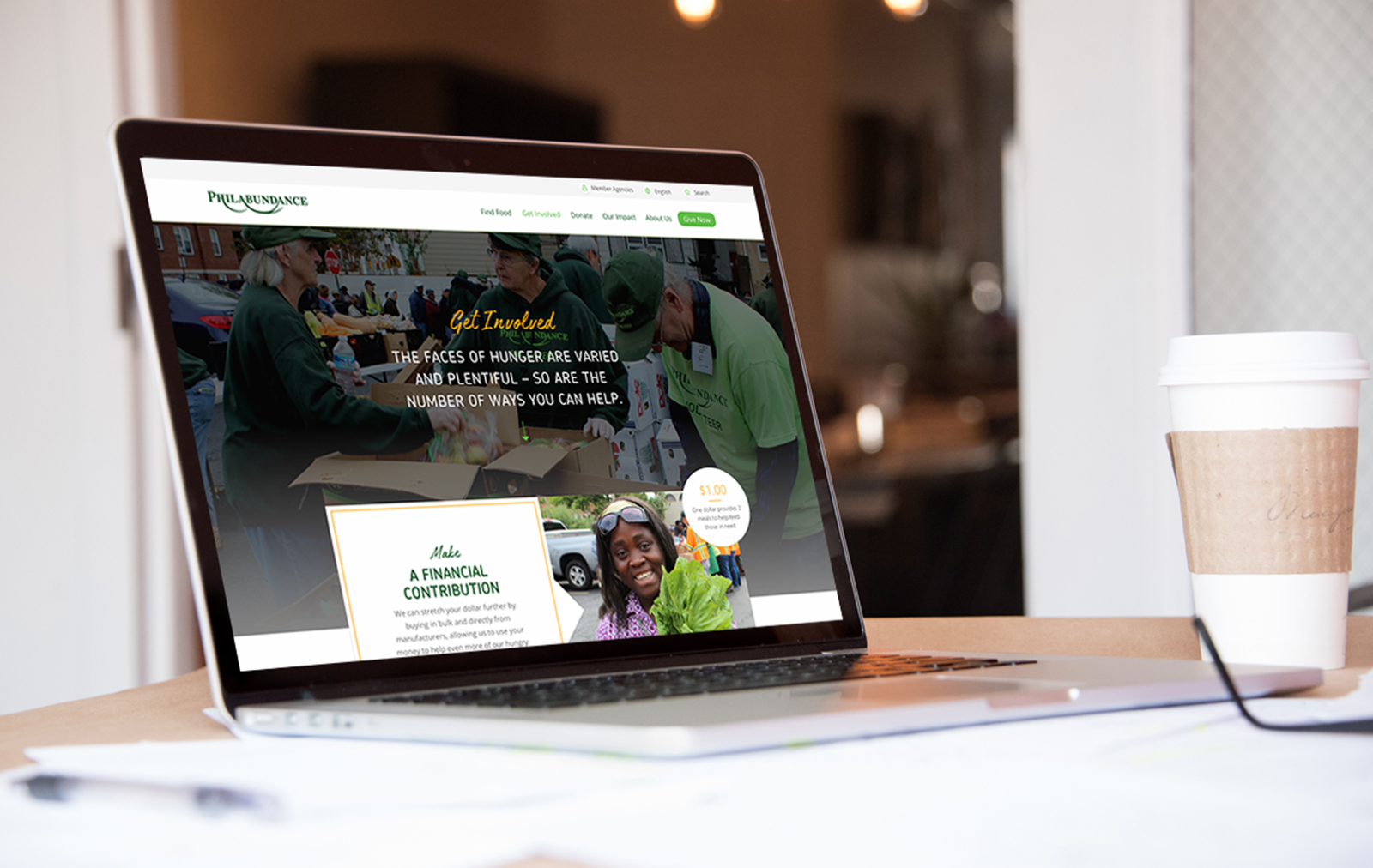September 24, 2019
Simple Steps to Measure Nonprofit Marketing Success

When I was a kid, I had a thing for cookies. Every Wednesday, my mom would fill our cookie jar, but she would never give me one. It was too close to dinner time. So once, I told her that, while she was out shopping, our German Shepard knocked me to the ground in pursuit of a squirrel. She gave me a cookie.
Next week, I told a similar story. This time, no cookie. At first, I was able to engage my mom’s concern for my well-being to win that sweet, sweet treat. How could I have known if the same engagement strategy would work until I tried it again? I was unable to “read” the signals. I didn’t know what to look for, and so I kept spending my energy on the effort without recognizing I should change my strategy.
I remember this story whenever I think of the Customer Relationship Journey in nonprofit marketing.
In this journey, we have to wait until we have already invested significant time, money and resources to see if we are making an actual impact. Often, nonprofits will put all this time and money into a website just to measure bounce rate, exit rate, and returning customer metrics. Then, they will take this data and try to work backwards, changing the site so they can wait again to see the numbers.
There is another journey that, if we add it to this customer journey, can supply the signals we need to measure ongoing success, allowing us to adjust our strategies in real time. This journey is one we already know because it’s based on relationships. And, it’s a far better way to measure nonprofit marketing success.
Step 1: Awareness
What starts every relationship? Awareness. It’s the moment you realize something or someone exists. It is that moment he sees her sitting in the restaurant window. It is the moment that aggressive driver cuts you off in traffic. No matter how long the relationship lasts, it starts with a single moment of recognition.
No matter how long the relationship lasts, it starts with a single moment of recognition.
Nonprofit marketing strategies should start with identifying triggers for your cause. Was it a family member who was diagnosed with breast cancer? Was it the Instagram story of Greyson, the baby elephant? Whatever they are, knowing your triggers are very important at this stage.
Think of a site visitor as someone at your door. The door keeps you from knowing they are there, and the visitor feels safe in that privacy. A connection with this potential donor needs to be made so they are compelled to take the next step, to knock on that door and let you know they are there. You have to make them feel more for your cause than their need for privacy.
Here are some nonprofit marketing ideas to accomplish this, and ways to measure their success in the process.
Landing Pages
Creating landing pages with keywords and content related to your cause’s “trigger points” can be an effective way to invite people in the door. Landing pages can be changed on the fly easier than a website, and can be A/B tested to get results faster.
Metrics to use:
- Page visits
- Video plays
- CTA click rate
- Bounce rate
- Exit rate
(Important! If you didn’t give the user anything to do on the page, a high bounce rate doesn’t mean much. Remember to put metrics in context!)
An Example:
A person who was triggered by her sister getting breast cancer may find her way to a landing page with a video on how they can help a loved one who has cancer. How likely is it that she will click a link to learn other ways she can help her sister and others like her? A landing page within your website will give you the answer. Multiple landing pages will point you towards the better answer.
Stories
Stories are powerful motivators in nonprofit marketing. People want to have closure, to know how the tension resolves. Videos, podcasts and articles are all great ways to tell stories. If the story is a written article, dividing the story into clickable sections to reveal hidden content gives you the ability to see how many sections they click. If you see that the last sections have little engagement, you can revise the story and remeasure how the new version performs.
Metrics to use:
- Time on page (compare with length of video)
- Video plays (25%, 50%, 100%)
- CTA click rate
- Click events
- Bounce rate
- Exit rate
An Example:
A video featuring a baby elephant getting fed milk and playing will help potential donors see the good your organization does. Following up this story with bios of other elephants gives them the action they need to take the next step and donate.
Step 2: Exploration
Awareness is the beginning of the relationship, but the journey doesn’t begin until your potential donor takes the first step away from their safety zone and begins to explore the unknown. Think of this phase of the journey as your first date. Keep in mind, visitors may be “dating” around with other similar organizations (which is why differentiation should be a key consideration in your nonprofit’s brand). A variety of information and interaction is important here to not only give visitors information they are looking for but to give you important website metrics.
Think about including these elements to start:
Interactive statistics
Showing site visitors how your nonprofit divides donations is both informative and engaging. It can help bring your mission to life for potential donors while simultaneously building trust.
Metrics to use
- Time on page
- Click events
- Exit rate
An Example:
Let’s say you use 85% of funds on programming. Encourage the user to click on how much they believe is spent ( 45%, 65%, or 85%) to invite their engagement. Visitors will be interested to interact and see the answer – their delight after learning the real answer is just an added bonus.
Sectioned Content
Informative content separated into sections such as how you started, what you do, what your mission is, and how you have accomplished your mission this year, allows your visitor to select how they want to explore. Sections also allow for easier measuring to see which types of information visitors are most interested in.
Metrics to use:
- Scroll depth
- Time on page
(P.S. Online tools like the Read-o-Meter are resources to use when determining if visitors are reading your content. Use the average minutes it takes to read your content to compare with the time users are spending on the page to see if they are digesting all the content or leaving before finishing. You can then follow up with A/B testing different versions of the content to see which performs the best.)
An Example:
Feature an About Us page that leads with your nonprofit’s mission. Then, display the following content as clickable sections so the user is encouraged to explore by clicking, which will also give you valuable metrics.
FAQs & Chatbots
There are some questions that visitors want answers to immediately. Instead of making them hunt for it, give it to them immediately so you can quickly see what they want to know and which answers motivate them to take the next journey step. An FAQ where users can select or type the question to see the answer tells you which information is priority. A Chatbot allows visitors to engage while still feeling safe under anonymity, so letting them know it’s a chatbot is a benefit that shouldn’t be hidden. Using one also allows you to see what questions they want to know that you didn’t answer in the existing content.
A Chatbot allows visitors to engage while still feeling safe under anonymity, so letting them know it’s a chatbot is a benefit that shouldn’t be hidden.
Metrics to use:
- Click rate
- Time on page
- Exit rate
- Chatbot interactions
Events Calendar
Are you doing things out in the community? Showcasing events that your people are participating in will be give your website a human touch it may lack. A “search your area” functionality could also allow visitors to find events close to home.
Metrics to use:
- Calendar event clicks
- “Add to calendar” events
- Sign up submissions
Interactive Maps
Don’t just show your visitors where you are doing good in the world, help them experience it. Interactive maps allow visitors to click on areas of interest and see things such as statistics, videos, and people.
Metrics to use:
- Click events
- Video plays
- Time on page
An Example:
Build an interactive map that, after clicking a pin, elevates content showing how many elephants were saved in that area, a video of an elephant in that area being fed, and three names of elephants that the user can click on to read the bios and donate to.
Social links
Visitors may want to keep tabs on your nonprofit’s mission, but won’t want to actively visit your website to do it. Giving them easy access to your social channels not only keeps them engaged but can also work as a bridge back and forth to your website and landing pages.
Metrics to use:
- Assisted social conversions
- Last interaction social conversions
An Example:
Remember Greyson, the baby elephant? Having a social campaign about him is a great way to have users from your website stay in touch by following his story on social from your website and having a way to come back to the website to donate when they are ready.
Step 3: Trial
If the exploration went well and your visitor was both informed and inspired, they will decide you are worth a tiny investment of their money. They are not fully invested yet, so think of the Trial phase as a relationship test. This phase is filled with opportunity to not only move your visitor to commit, but to also measure visitor experience on a personalized level. This is where you really get to “court” your visitor and in doing so correctly, receive a lot of valuable information from them in return.
Here are some nonprofit marketing strategies to include.
Recognition pages
Did the visitor sign up for a newsletter? Make a one time donation? Reward them for their success and increase your chance to earn a new member or donor. Celebrating engaged visitors instead of putting your organization in the forefront allows them to feel personal achievement that they will want to continue to feel. A video focusing on a person or animal that they have “personally” helped will allow them to feel like a hero and allow you to measure engagement immediately after a donation.
Metrics to use:
- Page visits
- Video plays
Stories
Show the visitor a possible future by showing them others who have committed to the cause and what it has done for them. Videos or articles about donor success stories can show them how a one-time donation feels good, but a continuous donation will change their life in a positive way. Inspiring, uplifting pull quotes within the story can help create a sense of wanting to feel that themselves.
Metrics to use:
- Video plays
- Time on page
- Scroll-depth
- Social shares
Step 4: Commitment
At this stage, the donor believes in your cause and your organization. Help them feel like they’re a part of your organization. Help them know that their actions are directly and positively helping the cause and in turn, transforming them and the world for the better. Fundraising strategies for your nonprofit shouldn’t stop here – your relationship with your donor is only just beginning.
Help your donors feel like they’re a part of your organization.
Here are some ideas to get started.
Welcome pages
Let visitors know they have now moved away from the casual donor and have become a very important individual. Personalization can go a long way here.
Metrics to use:
- Page visits
- Video plays
Exclusive content
Demonstrate that the donor’s life has changed with results that can see and feel themselves can assist in making them not only feel a part of something special but can create a sense of wanting more. Exclusive pages, content and or even products can reward the visitor and give the organization a way to show “commitment” back to the donor.
Metrics to use:
- Page visits
- Video plays
- Time on page
- A donation event
- A purchase event
An Example:
Build an online store only available to subscribed, committed donors that allows them to make a purchase or donation in their name or in honor of someone else. Nonprofit marketing offers a unique set of challenges, ones that are made harder by lack of time and resources. Just remember, it all comes back to building a relationship.

